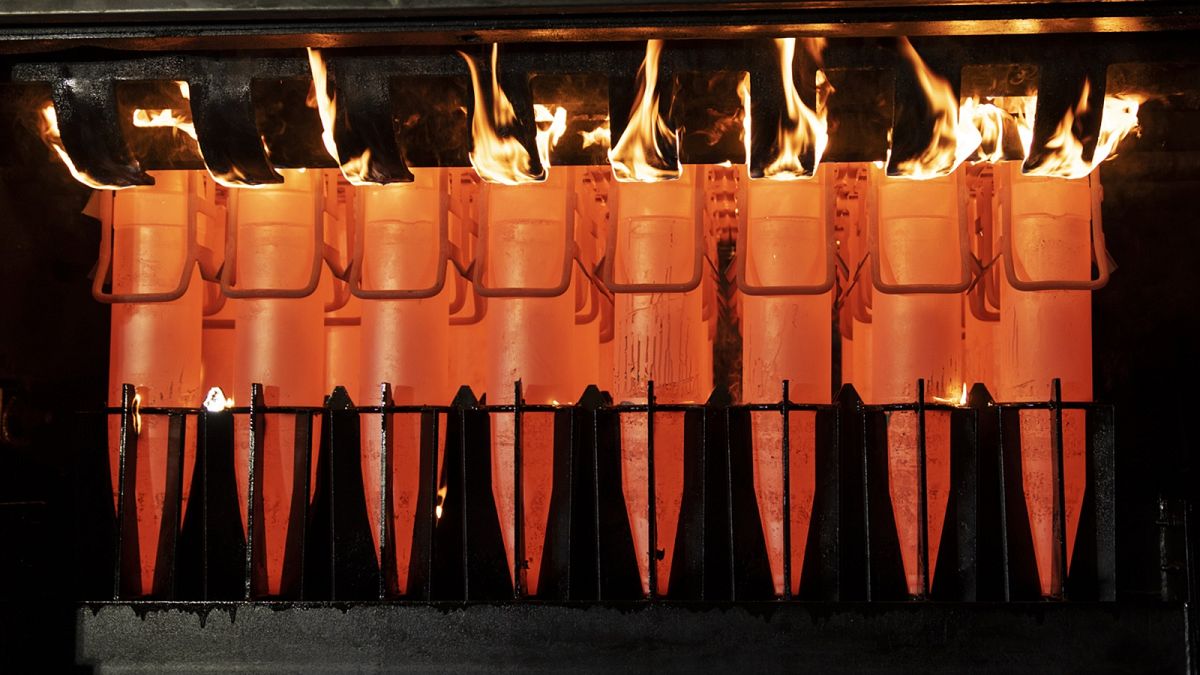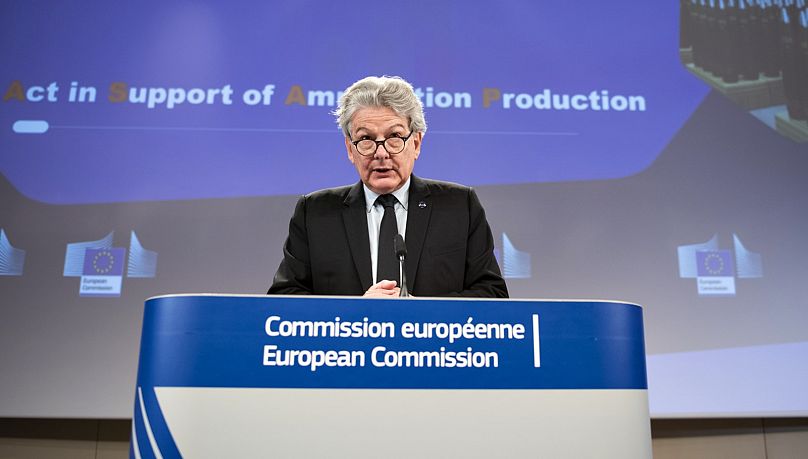Under the new plan, the European Commission intends to address the bottlenecks hindering the production of 155mm artillery shells.
The European Commission unveiled on Wednesday a €500-million plan to boost the European defence industry and ensure the timely delivery of ammunition to Ukraine, an urgent demand of Kyiv as it prepares to launch its anticipated counteroffensive against the invading Russian troops.
The initiative from Brussels is meant to address the bottlenecks and shortfalls that are hindering the manufacturing of 155mm-calibre artillery shells, a specific kind of weapon used by Ukraine's Armed Forces that the bloc has promised to provide on an accelerated timeline.
The present obstacles stem from the enduring peace that Europe had enjoyed since the end of the Cold War, which fostered a sense of complacency that resulted in decreased production capacity, sluggish investment, low demand from public authorities, insufficient skilled personnel, slow permitting process and lack of access to raw materials.
All these simmering problems were abruptly laid bare by Russia's invasion of Ukraine, leaving the European Union caught between Kyiv's repeated pleas for military support and the harsh economic reality on the ground: current estimates suggest that it takes up to one year for the defence industry to deliver an order submitted by a government.
Mindful of these impediments, the Commission has prepared a special envelope of €500 million in EU funds to tackle a two-fold dilemma: how to ramp up the making of the ammunition that Ukraine so desperately needs and how to ensure member states can replenish their own national stocks.
"The fact is that this is a high-intensity war that probably no one forecasted," said Thierry Breton, European Commissioner for the internal market while announcing the initiative.
"It is true that we are lacking this kind of ammunition to support Ukraine – but everywhere, not only in Europe, including our allies, the US, are lacking. Everybody is lacking."
Striking a realpolitik tone, Breton said the invasion required a "change in paradigm" to move the bloc into "war economy mode" and rapidly upscale the production of weapons to meet both Kyiv's short-term expectations and the EU's long-term security challenges.
"The security architecture of the Union has dramatically changed since the Russian war in Ukraine. We need to take this into consideration," Breton said.
"We cannot be naïve. This is a fact. It is our responsibility to make sure we do whatever we can to continue to protect, together, our fellow citizens and then adapt ourselves to this new geopolitical reality."
The €500 million will come from two separate EU programmes: €260 million from the European Defence Fund (EDF) and €240 million from the European defence industry reinforcement through common procurement act (EDIRPA), an instrument proposed last year that is still under negotiations.
These EU funds will finance up to 40% of a variety of industrial actions designed to boost the production of ammunition, such as modernising assembly chains, setting up cross-border partnerships, securing raw materials, upgrading obsolete stocks or reskilling the workforce.
The Commission believes it can leverage an extra €500 million from the private sector for a total of up to €1 billion.
On top of that, Brussels will allow member states to "top up" this money by channelling a share of their allocated cohesion funds and COVID-19 recovery grants into their domestic arms industry, although it's still unclear how many countries will make the switch.
Unlike cohesion funds, which are earmarked for undeveloped areas and derive from the regular EU budget, recovery funds are financed through a one-off scheme of joint borrowing and come with strict strings attached to their disbursement.
Both cohesion and recovery funds have been repurposed in the past, most notably in a €300-billion investment plan to achieve energy independence from Russia, but the use of coronavirus cash to beef up the arms industry represents a leap of budgetary imagination.
Asked about the legality of this move, Breton argued that one of the key goals behind the history-making recovery fund was to strengthen the EU's resilience, something that in his view "obviously" includes bankrolling industrial projects, such as the production of ammunition.
"We have to act very quickly in terms of funding," he noted.
The third pillar
The €500-million plan presented on Wednesday is the third and final pillar of a new EU strategy agreed in late March to further expand the bloc's military support for Ukraine.
The strategy's main goal is to deliver 1 million artillery shells over the next 12 months, a tall order that Breton said he was "confident" could be achieved.
The first pillar, a tranche of €1 billion to partially reimburse member states for their immediate delivery of weapons to Kyiv, is already up and running. The second one, an additional €1 billion to jointly purchase artillery shells and missiles, underwent protracted negotiations as ambassadors haggled over the definition of "Made In Europe" for over a month.
The discussions centred on how to prioritise EU-based companies in the procurement of ammunition and how to delimit the contours of a European value chain. Coincidentally, the impasse was resolved on Wednesday afternoon, barely three hours after the Commission's presentation.
Regarding the "Made In Europe" debate, Breton, a vocal proponent of the "strategic autonomy" concept, said eligibility rules under the Commission's plan respected the existing circumstances of the European defence industry, which often sources materials from countries like Australia and South Africa.
"We take the supply chain as it is, that’s extremely important. Of course, we support European companies but with all the supply chain. In this way, it will be simple," Breton said.
"We want, of course, projects that produce in Europe. This is a requirement from a legal basis. But compared to other recent tools, we did not put any requirement on the supply chain."
The €500-million industrial plan still requires the approval of the European Parliament and member states, many of whom are calling for a pragmatic approach to deliver weapons to Ukraine as soon as possible regardless of their denomination of origin.
In a tongue-in-cheek reference, the Commission's initiative has been dubbed ASAP, which stands for "Act in Support of Ammunition Production."
The roll-out of the €500 million is expected to be gradual, lasting until June 2025, and will mostly benefit the 11 member states that have the capacity to produce 155mm artillery shells: Bulgaria, Croatia, the Czech Republic, France, Germany, Greece, Italy, Poland, Slovakia, Spain and Sweden.
Reacting to the news, Dmytro Kuleba, Ukraine's foreign affairs minister, called the industrial plan a "step we expected and a sign of lasting EU support for Ukraine."
This piece has been updated with new details.

